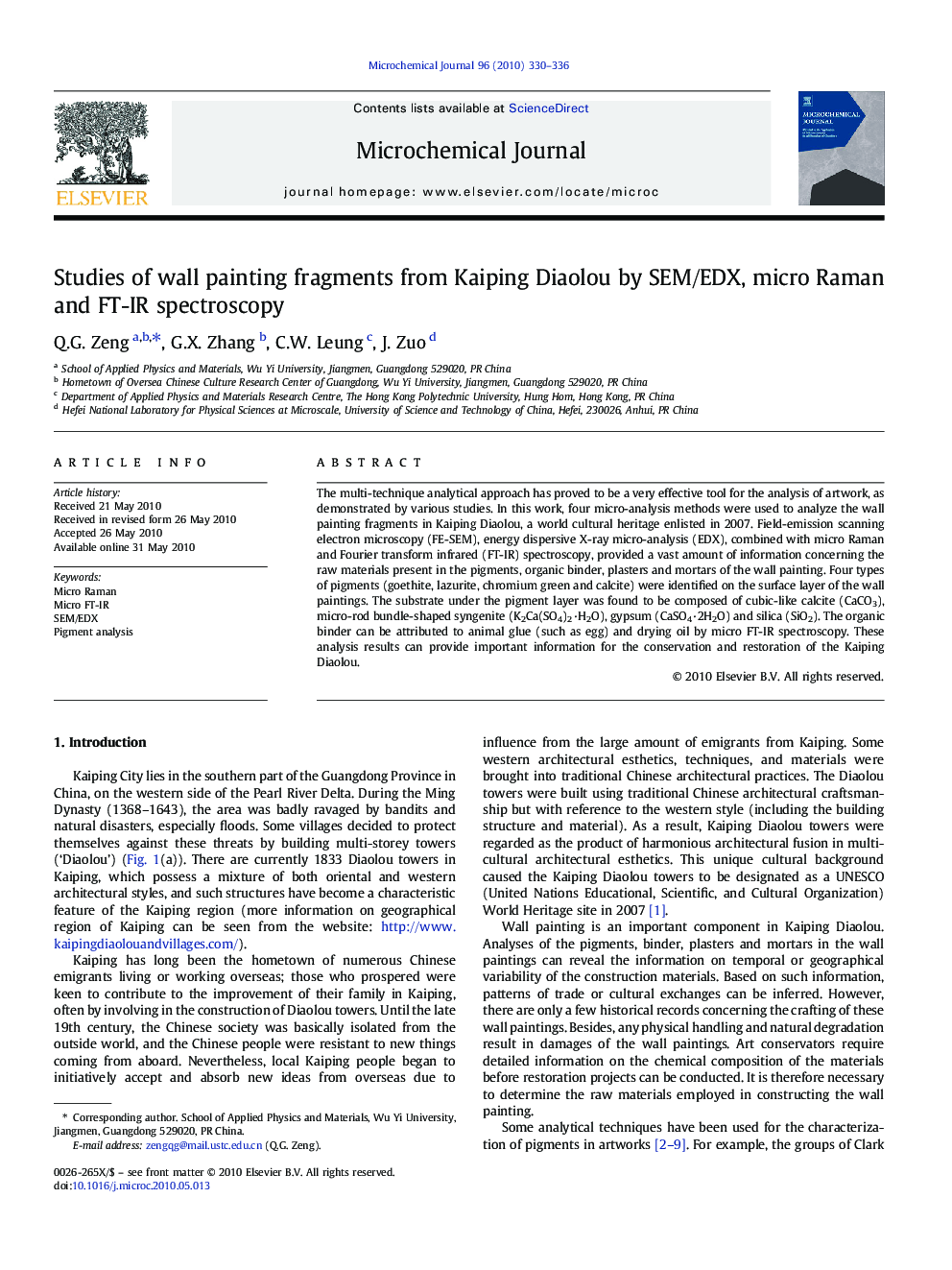| Article ID | Journal | Published Year | Pages | File Type |
|---|---|---|---|---|
| 1227932 | Microchemical Journal | 2010 | 7 Pages |
The multi-technique analytical approach has proved to be a very effective tool for the analysis of artwork, as demonstrated by various studies. In this work, four micro-analysis methods were used to analyze the wall painting fragments in Kaiping Diaolou, a world cultural heritage enlisted in 2007. Field-emission scanning electron microscopy (FE-SEM), energy dispersive X-ray micro-analysis (EDX), combined with micro Raman and Fourier transform infrared (FT-IR) spectroscopy, provided a vast amount of information concerning the raw materials present in the pigments, organic binder, plasters and mortars of the wall painting. Four types of pigments (goethite, lazurite, chromium green and calcite) were identified on the surface layer of the wall paintings. The substrate under the pigment layer was found to be composed of cubic-like calcite (CaCO3), micro-rod bundle-shaped syngenite (K2Ca(SO4)2·H2O), gypsum (CaSO4·2H2O) and silica (SiO2). The organic binder can be attributed to animal glue (such as egg) and drying oil by micro FT-IR spectroscopy. These analysis results can provide important information for the conservation and restoration of the Kaiping Diaolou.
